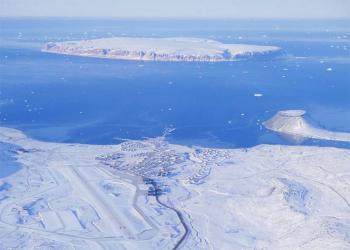Identifying fire plumes in the Arctic
with tropospheric FTIR measurements and transport models
Fires release trace gases in the atmosphere, such as carbon monoxide (CO), hydrogen cyanide (HCN), and Non-Methane HydroCarbons (NMHCs), including ethane (C2H6), acetylene (C2H2), methanol (CH3OH), formic acid (HCOOH), and formaldehyde (H2CO). These species can be transported to the Arctic (Shindell et al., 2008) and affect tropospheric chemistry (Tilmes et al., 2011), oxidizing power (Olson et al., 2012), and radiative transfer (Wang et al., 2011) of this sensitive polar region, which has been warming rapidly over the past century (Lesins et al., 2010). The frequency and intensity of biomass burning are strongly linked to climate change, and constitute a large source of the variability in Arctic tropospheric composition. However, our knowledge concerning transport, emissions from fires and sources of Arctic pollution remains incomplete. Our recent study investigates pollution from biomass burning events that occurred in extratropical forests and were transported to the high Arctic with two sets of FTIR measurements, located in Eureka (Nunavut, Canada, 80°05’N, -86°42’W) and Thule (Greenland, 76°53’N, -68°74’W) (Viatte et al., 2015).
Read more at Viatte 2015...
